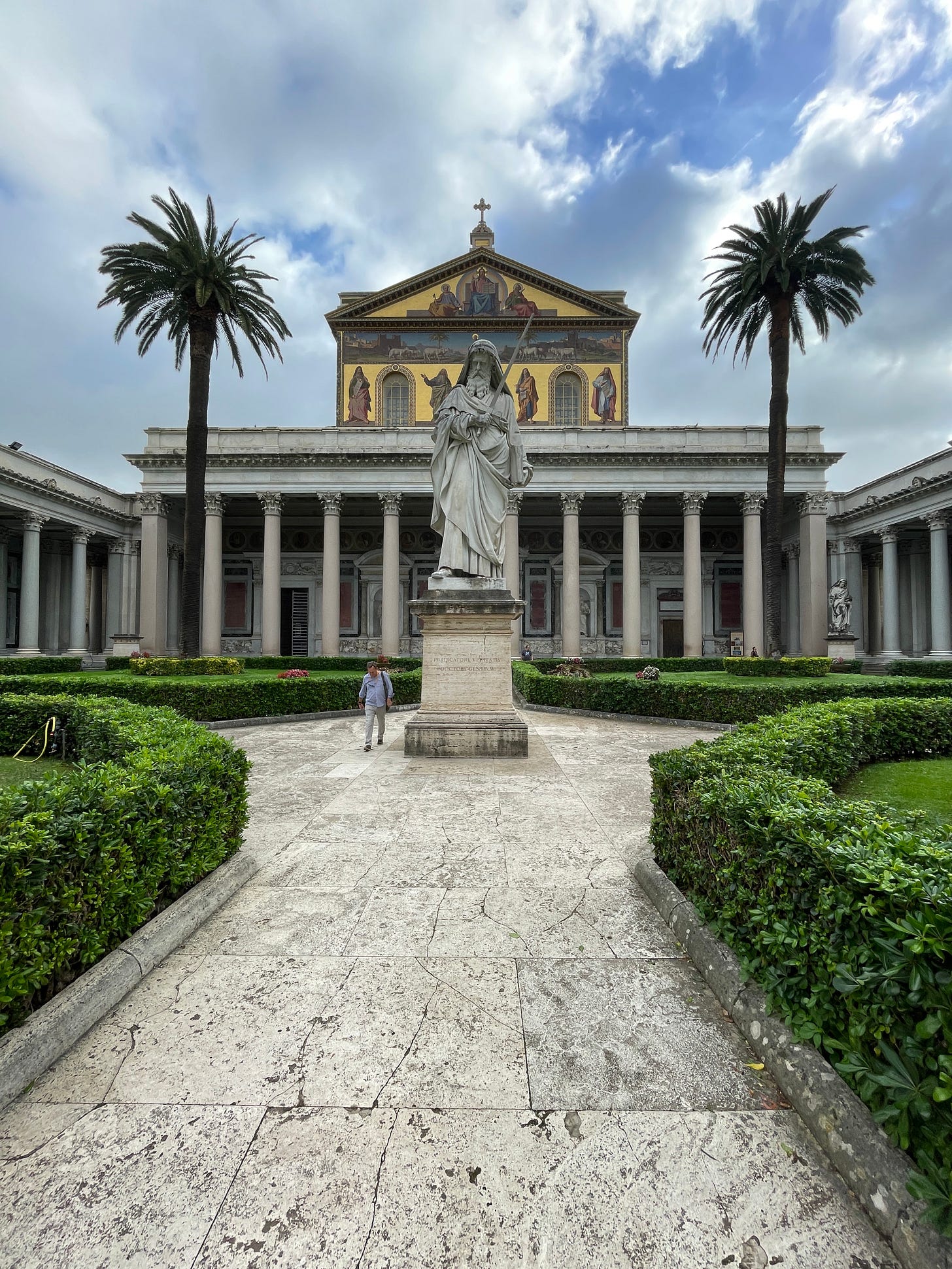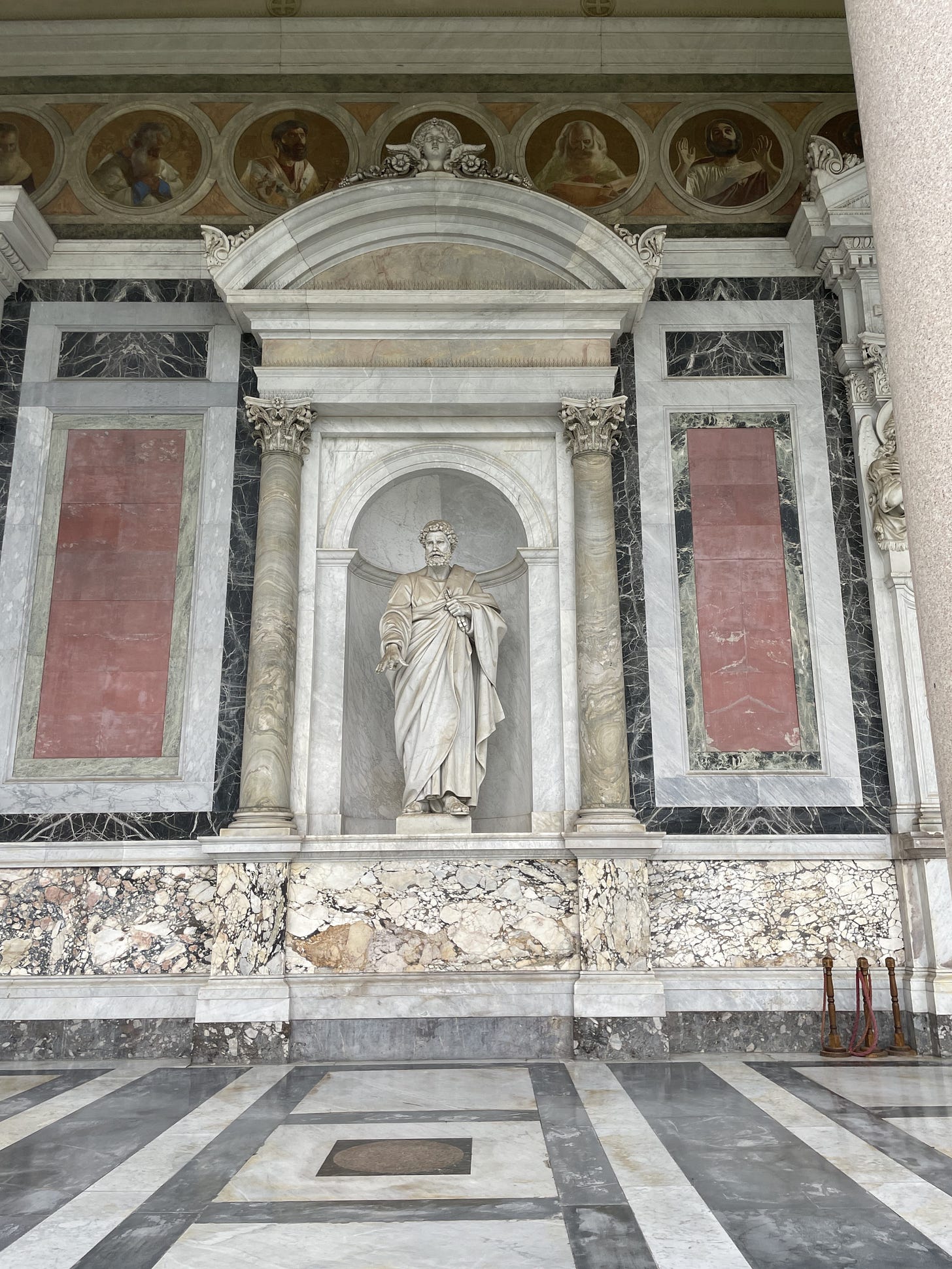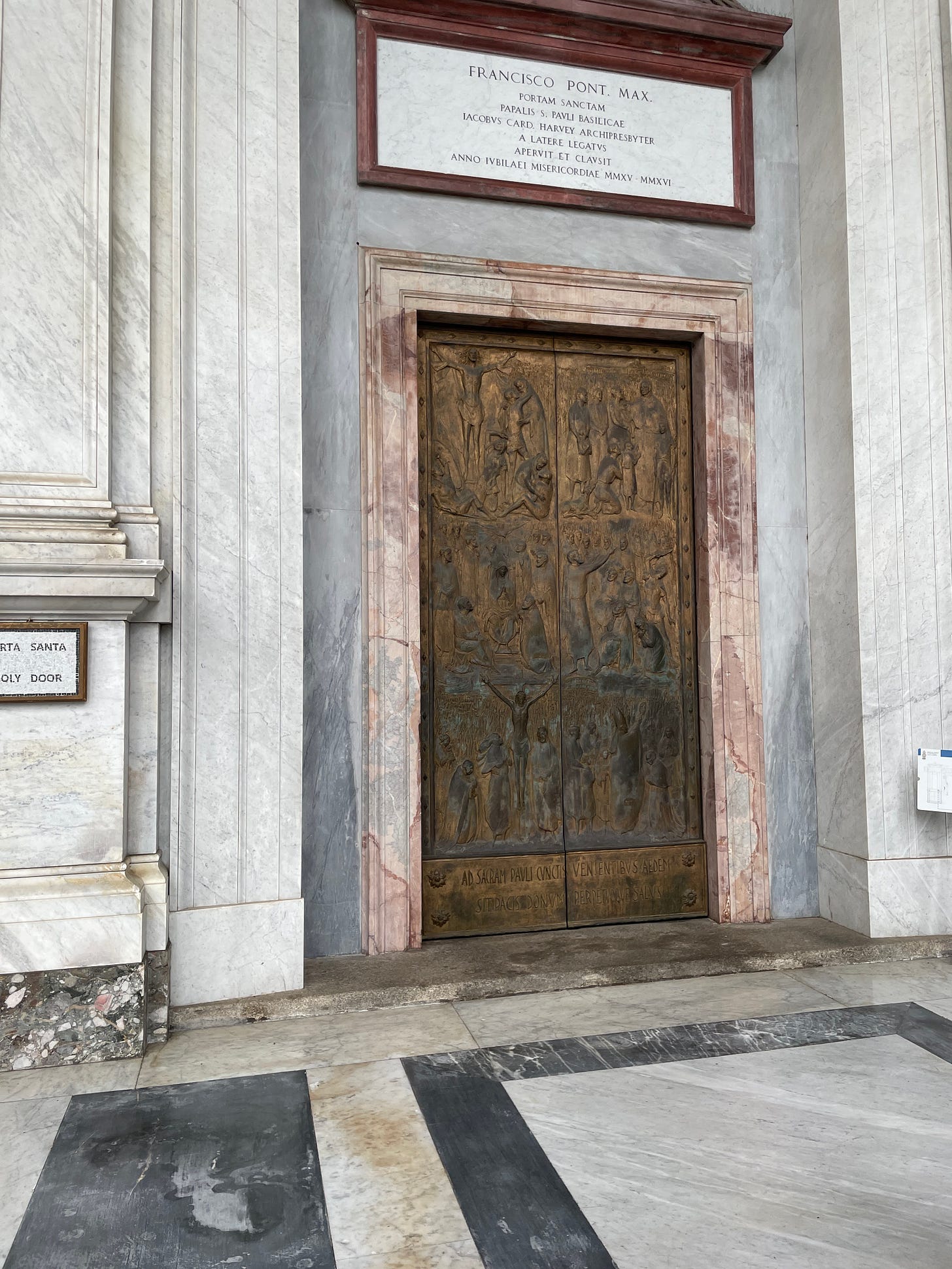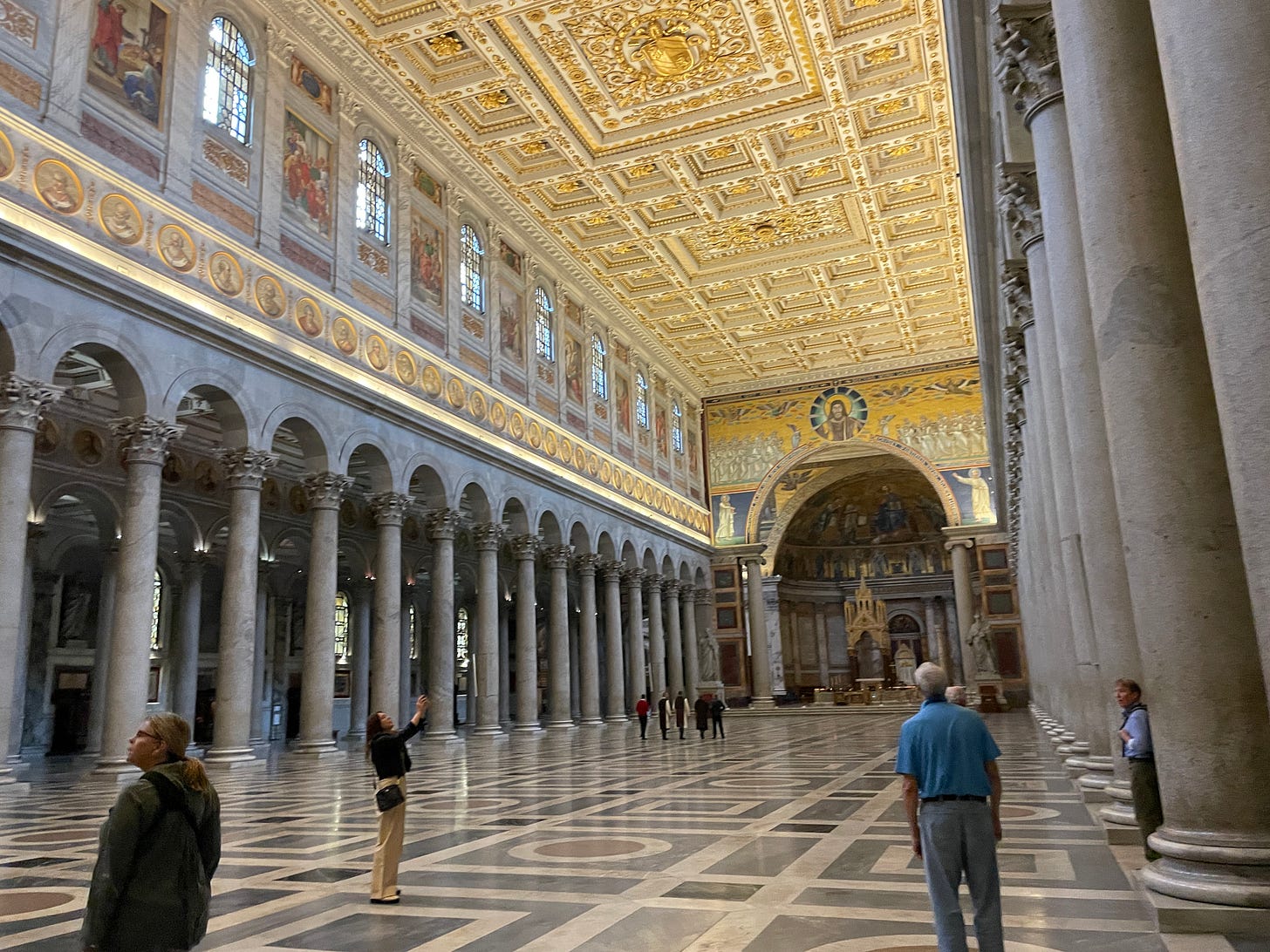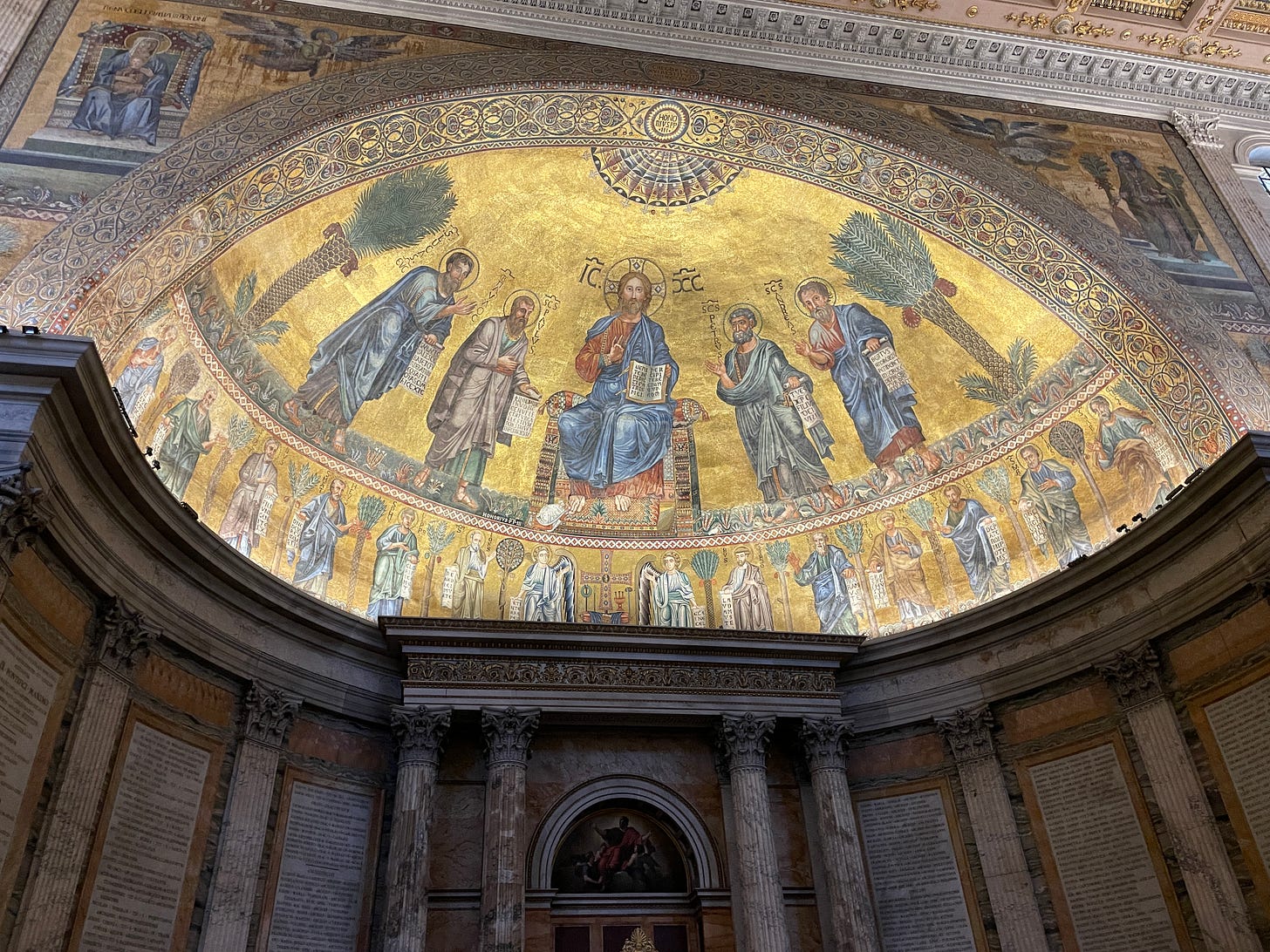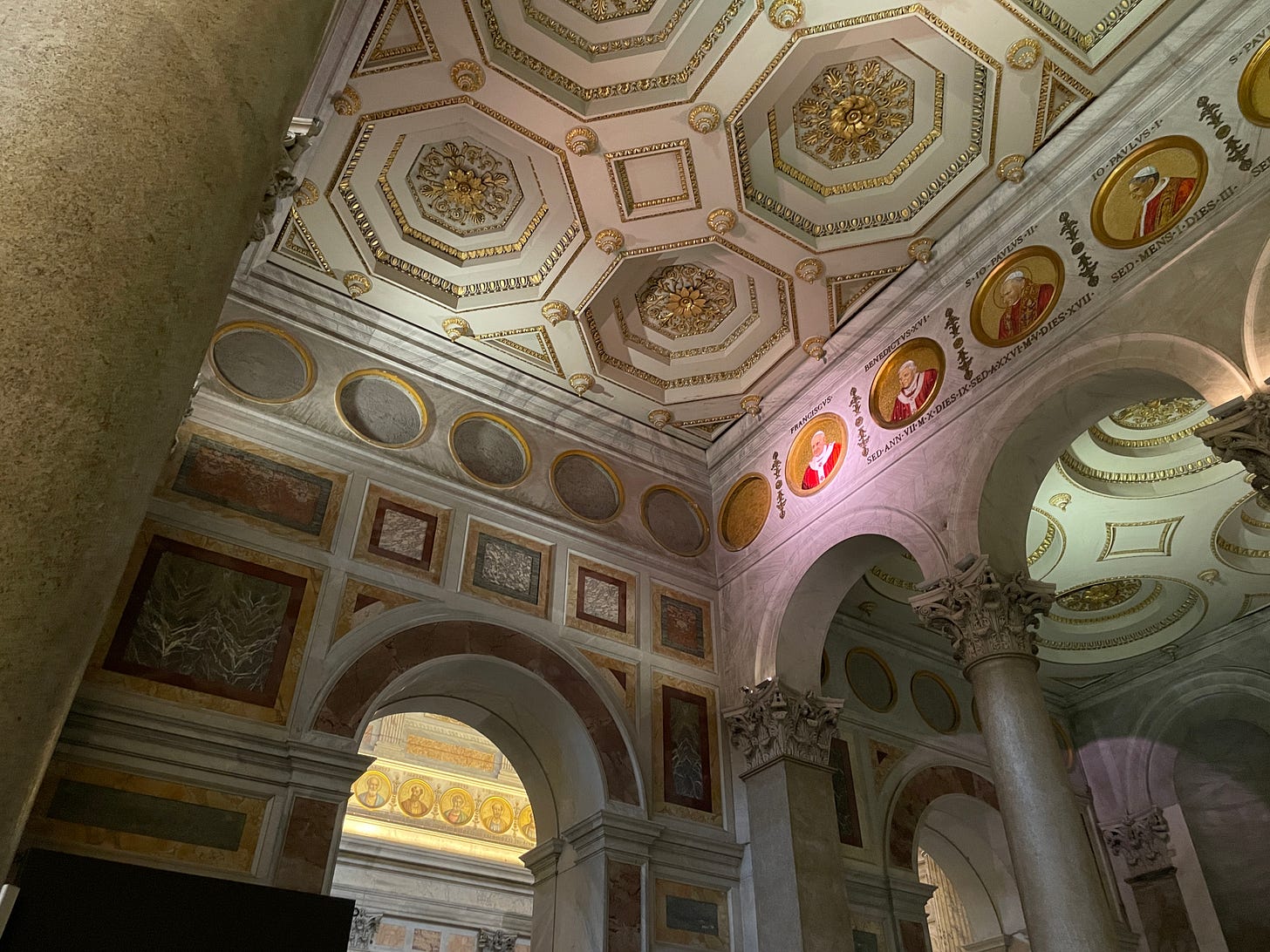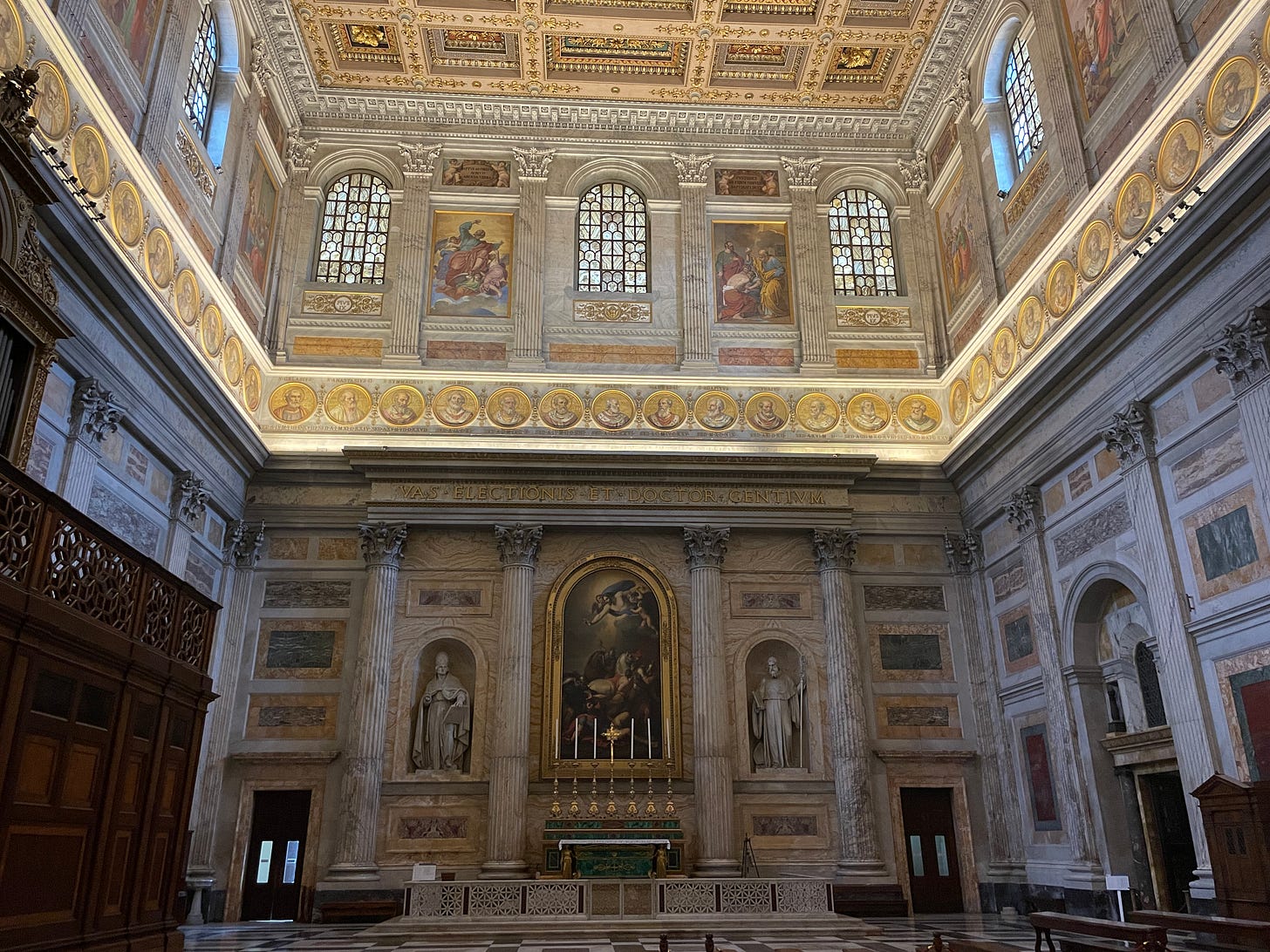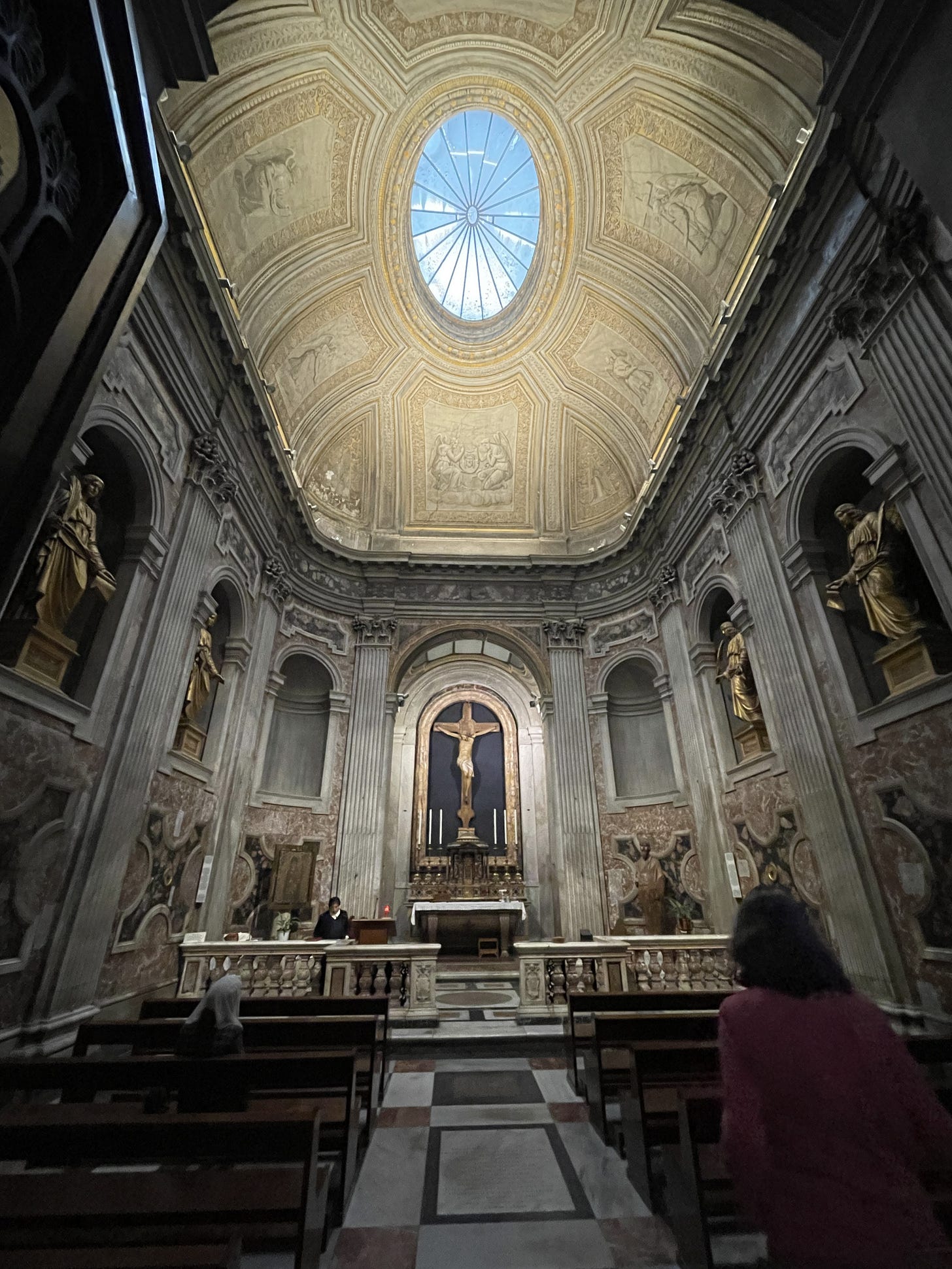We had to make a decision for the morning of this day of our pilgrimage, either go to the Wednesday papal audience or go visit St. Paul Outside the Walls. It wasn’t an easy choice, but eventually we decided it’s easier to watch the Pope online than to visit apostolic relics.
St. Paul was, like St. Peter, martyred in Rome under the persecutions of Nero. He was executed about two miles from this spot, but here is where his body was brought by the Roman matron Lucina, who placed it in her family tomb.
The tomb quickly became a place of devotion and around 324, Emperor Constantine erected a basilica here. Throughout the rest of the fourth and into the early fifth century, it was expanded and embellished as pilgrims flocked to the site.
The Saracens pillaged the basilica in 847. Then, John VIII (who reigned from 872-882) fortified it and constructed a village around it.
The Basilica features a bronze holy door, which will be opened for next year’s 2025 Jubilee Year. The plaque in the picture above commemorates its last opening in 2015 for the extraordinary jubilee by Pope Francis.
What’s the second largest church in Rome? This one. For a significant time it was the largest, until the current St. Peter’s was completed.
On the night of July 15, 1823, the roof caught fire, it is thought, from a smoldering coal left by a workman. It went up in flames and crashed into the nave below, destroying most of the basilica. At the time of the fire, Pope Pius VII was dying and those attending him decided not to add the sad news to his suffering. He died on July 20.
Pope Leo XII ordered the basilica’s reconstruction and it was financed by donations from around the world. The reconstruction was completed in 1854 and was consecrated by Pope Pius IX (1846-1878).
The apse mosaic dates from about 1220 and managed to survive the fire. (Seriously, why aren’t apse mosaics something we do anymore?)
Lining the walls are small mosaics of all the popes throughout the history of the church. The current one gets a little spotlight.
There are room for six more popes in the current setup. I’m pretty sure they will figure out what to do when we get there. Unless we have a repeat of 1276 sometime soon, it won’t happen in my lifetime.
During the reconstruction after the fire, the altar area was excavated, revealing a tomb with a marble slab inscribed “Apostolo Paulo Mart” and a stone sarcophagus underneath it. In 2002 it was further excavated and bone fragments were found inside. Carbon-dating confirmed they were from the right time period.
The altar (above) was presented by Tsar Nicholas I of Russia. The statues flanking the altar are of St. Gregory the Great (l) and St. Bernard (r). (Notice more of the pope mosaics. There've been a lot of popes so they go all around the church.)
The chapel above is the only one that survived the fire of 1823.
I hope you enjoyed this installment of our Roman pilgrimage.
Grace & peace,
Chris



